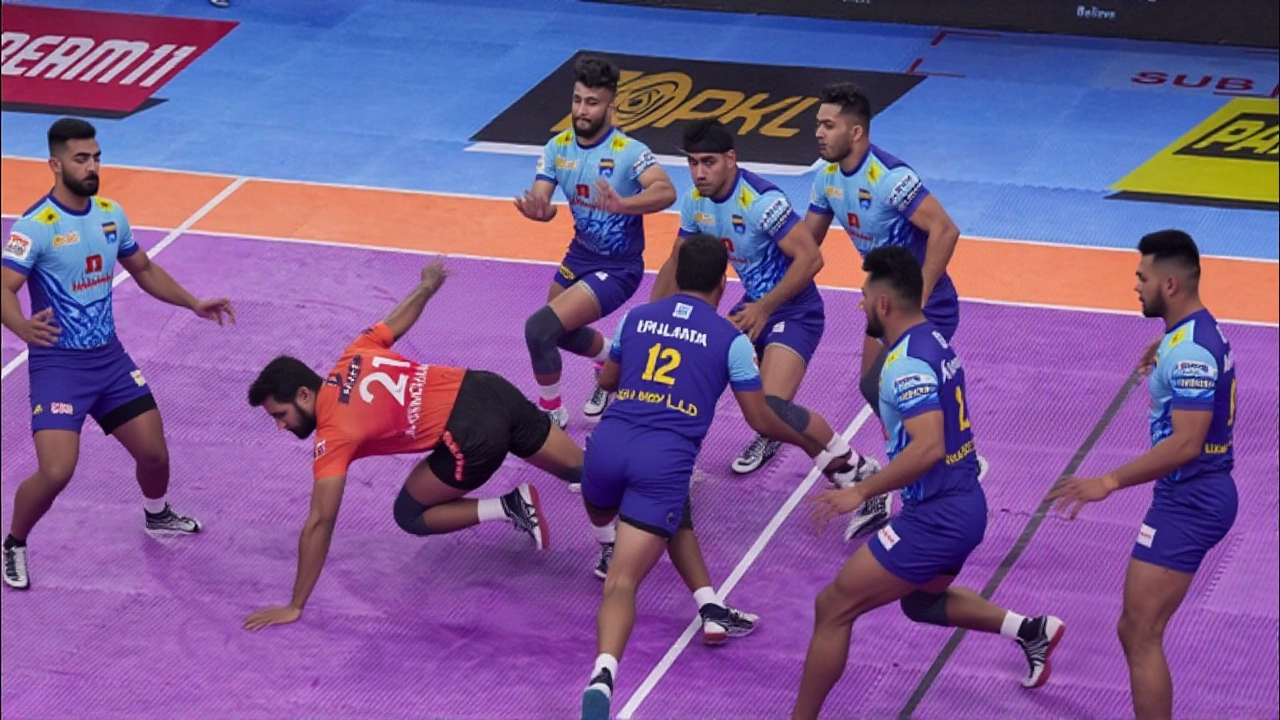Bengal Warriors – Your Guide to the Pro Kabaddi Powerhouse
When talking about Bengal Warriors, the franchise that rose from Kolkata to become one of the most consistent contenders in the Pro Kabaddi League. Also known as Kolkata Warriors, the team blends raw athleticism with tactical depth, drawing fans from every corner of eastern India. Their story isn’t just about points on a scoreboard; it reflects how a regional club can shape a national sport.
The sport at the heart of the franchise is Kabaddi, a high‑intensity contact game that mixes strategy, agility, and teamwork. Kabaddi’s fast‑paced raids and solid defenses create a perfect stage for drama, and the Pro Kabaddi League, India’s premier professional competition that turned a traditional pastime into a televised spectacle amplifies that drama with city‑based franchises, auction‑driven rosters, and league‑wide narratives. Because the league demands meticulous team management, the Warriors invest heavily in scouting, data‑driven training, and player welfare, turning every season into a case study of modern sports administration.
Why the Bengal Warriors Matter Beyond the Court
Fans don’t just watch matches; they consume stories through sports broadcasting, social media, and regional news outlets. When a Warriors’ raid wins a crucial point, the highlight reels light up the Times of India’s sports page, and the same clip circulates on YouTube, Instagram, and even AI‑powered news bots. This media ecosystem creates a feedback loop: greater coverage fuels fan enthusiasm, which in turn pressures broadcasters to invest in better production quality—think ultra‑slow‑motion replays and real‑time analytics powered by GPT‑4 style models. That blend of technology and tradition means the Warriors’ brand extends into digital classrooms, where young athletes learn raid techniques from AI‑generated tutorials, and into corporate boardrooms, where sponsors evaluate ROI through sophisticated metrics.
Across India, the conversation around Kabaddi touches education, economics, and culture. School holidays—like the 64‑day calendar released by Chhattisgarh—often feature inter‑school Kabaddi tournaments, seeding the next generation of talent. Meanwhile, media debates about bias, such as discussions around the Times of India’s editorial slant, indirectly affect how sports stories are framed, shaping public perception of teams like the Bengal Warriors. Even policy talks—whether about land use on reservations or the legal status of cows—can influence venue availability and fan turnout, reminding us that sports live in a broader socio‑political landscape.
All this context sets the stage for the collection below. You’ll find deep dives into the Warriors’ recent auction picks, analysis of their tactical shifts under the current coach, and commentary on how emerging tech is reshaping Kabaddi coverage. Whether you’re a die‑hard fan, a sports marketer, or just curious about how a regional team can drive national conversation, the posts ahead map out the many angles that make the Bengal Warriors a fascinating case study in modern Indian sport.
Bengal Warriors Stun U Mumba 37-35 in PKL Clash at Chennai
Posted by Aarav Khatri on Oct, 16 2025

Bengal Warriors rallied from a 14‑21 halftime hole to beat U Mumba 37‑35 in Chennai, tightening their playoff bid in PKL Season 12.